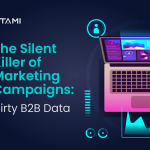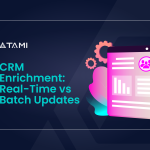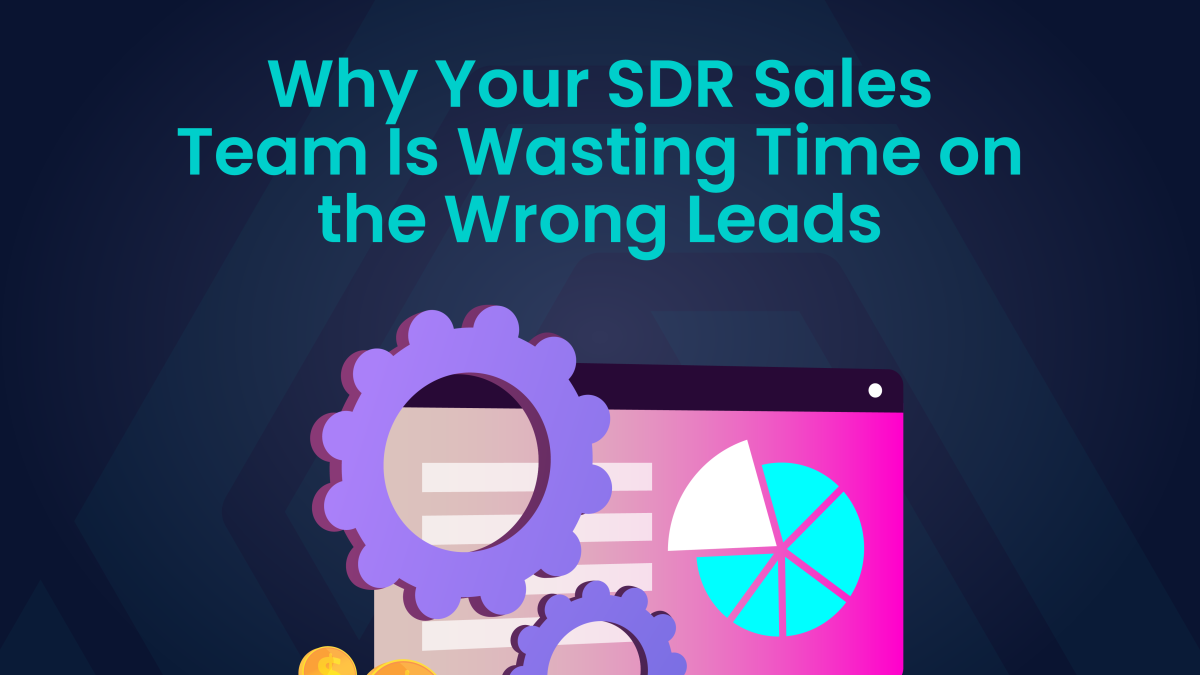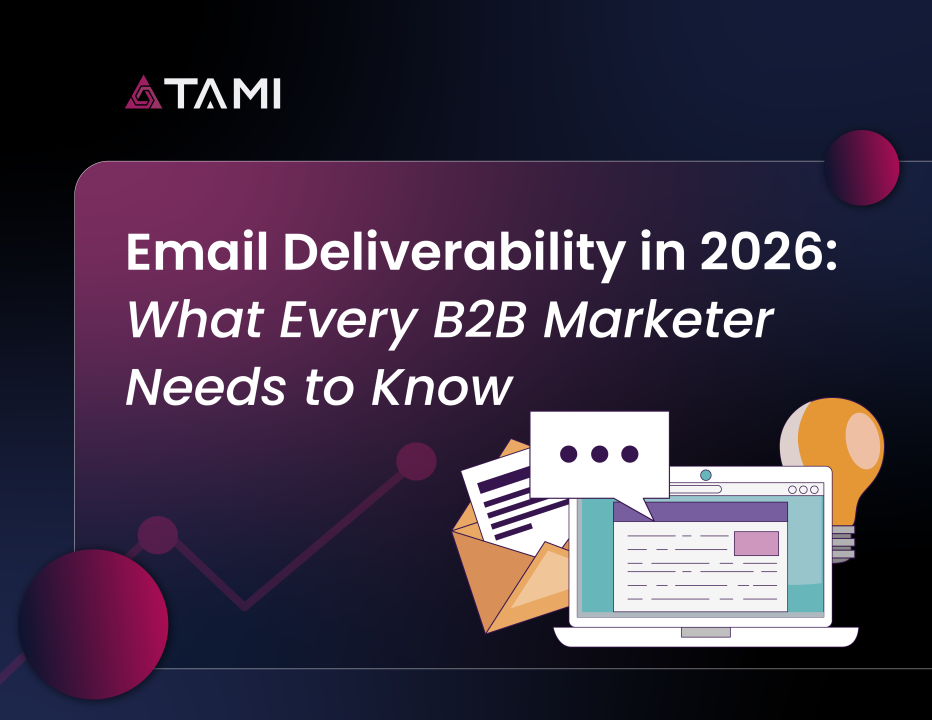
The Silent Killer of Marketing Campaigns: Dirty B2B Data
18/06/2025
CRM Enrichment: Real-Time vs Batch Updates
18/06/2025Every minute your SDR sales team spends on the wrong lead is a minute they could’ve spent closing. In 2025, with AI-driven targeting and real-time data enrichment becoming the norm, "spray and pray" is no longer just ineffective; it's a waste of payroll.
This post breaks down how SDR teams fall into lead quality traps, what the real costs are, and how top-performing teams are fixing it with data-first strategies.
The Hidden Cost of Bad Leads
Let’s start with the obvious: time. SDRs spend an average of 20–30% of their workweek qualifying leads that will never convert. That’s a cost center.
Here’s what wasted SDR effort looks like in real terms:
- Lost opportunity cost: Every hour spent on an unqualified lead is an hour not spent on a high-fit prospect.
- Burnout: Repeated rejections from irrelevant leads kill morale and increase churn.
- Slower pipeline velocity: AE calendars stay empty longer when SDRs are spinning wheels with mismatched prospects.
Now layer in the cost of dirty or outdated data—bounced emails, job hoppers, duplicate contacts—and the problem multiplies.
Why Lead Misdirection Happens
It’s easy to blame the rep, but most lead quality issues are rooted upstream in strategy, not execution. Here's where SDR sales efforts usually go wrong:
1. Generic ICP Definitions
Too many teams define their Ideal Customer Profile with a few broad filters: "Mid-market companies in North America using Shopify." That’s a segment, not a profile. And it opens the floodgates to dozens of irrelevant verticals.
Example: Two companies may both use Shopify, but if one sells low-margin, high-volume apparel and the other is a DTC biotech brand, your offer might only resonate with one.
SDRs end up targeting leads with no real buying intent or product fit. Conversion rates drop, messaging feels off, and reps waste time chasing prospects that were never going to convert.
Instead, drill deeper into what actually defines your best customers, like vertical (e.g., DTC wellness vs fast fashion), AOV, region, shipping model, or tech stack combinations. Use tools like TAMI to apply precision filters that reflect your real buyer profile, not just industry or platform. The goal isn’t more leads. It’s fewer, better ones.
2. Outdated or Bought Lists
Bulk lead lists from data vendors often look good at a glance: titled contacts, company size, and valid emails. But they fail on context. Does this person still work there? Is the company active? Are they using a competitor?
Without real-time enrichment, you're flying blind. That leads to bounce rates, low reply rates, and a pipeline full of dead weight.
SDR sales teams should prioritize sources that offer live data enrichment. For example, TAMI refreshes contact records in real-time, flags job changes, and fills in missing details, so your reps only reach out to verified, in-role decision-makers at active companies. Better data equals better targeting and better results.
3. No Competitive Intelligence
Most SDRs don’t know if a prospect is already working with a competitor or if they’ve recently churned. That’s critical context that affects messaging, timing, and win likelihood. That’s critical context that affects messaging, timing, and win likelihood.
Knowing a company just left Zoominfo or Stripe tells you everything about how to pitch a better alternative. Without that, you sound like everyone else.
Without competitor insights, reps rely on generic value props and miss the chance to position themselves as the smarter switch. It’s harder to stand out, and deals stall because the outreach lacks urgency or relevance.
Instead, use tools like TAMI to flag competitor usage and churn events. It lets SDRs tailor messaging with precision (like “Saw you’re using X, curious how it’s working for you”) and jump in with the right pitch at the right moment. Competitive timing can be the difference between a pass and a pipeline win.
4. Tech Triggers Are Missing
Today’s fastest-growing SDR sales teams are using website tech stacks, hiring trends, and third-party tools as qualification filters. If you’re not using this type of intelligence, you’re disqualifying good leads or chasing cold ones.
Without trigger-based insights, SDRs don’t know who’s actually in-market, scaling, or switching tools. That means wasted outreach on prospects who aren’t ready, or worse, missing the ones who are.
Instead, layer in signals like new tech adoption, tool replacements, or rapid hiring. Platforms like TAMI let you filter leads by real-time changes in tech stack or behavior, so your team can spot when a company starts using a complementary tool, churns from a competitor, or expands into a new market. These are your warmest leads. Act like it.
How to Make the Most Out of Your SDR Sales Team
Your SDR team isn’t underperforming because they aren’t working hard. It’s because they’re often working in the wrong direction. When reps are handed generic ICPs, outdated data, and no context around tech or competitors, even the best outreach turns into guesswork.
To fix that, you need to shift from volume-based selling to precision-based prospecting. That means:
- Building granular ICPs based on actual customer patterns
- Enriching your CRM with real-time data
- Surfacing competitive signals before the first call
- Triggering outreach based on meaningful tech or hiring events
Tools like TAMI bring all of this together. Instead of leaving reps to dig, guess, and waste time on the wrong leads, you give them verified, context-rich accounts they can act on confidently. The difference isn’t just more pipeline, it’s better pipeline, faster cycles, and higher conversion.
Final thoughts
SDR sales is all about momentum, and nothing kills it faster than chasing the wrong leads. The truth is, most teams don’t need more hustle. They need smarter inputs: cleaner data, sharper filters, and the kind of context that makes messaging resonate.
When you fix the upstream targeting issues, everything else improves downstream. Calls go better. Emails get replies. Demos get booked. And reps finally spend time where it counts, on prospects that actually convert.
Want to see what that looks like in action? Book a demo with TAMI and watch what happens when your team stops guessing and starts selling.









